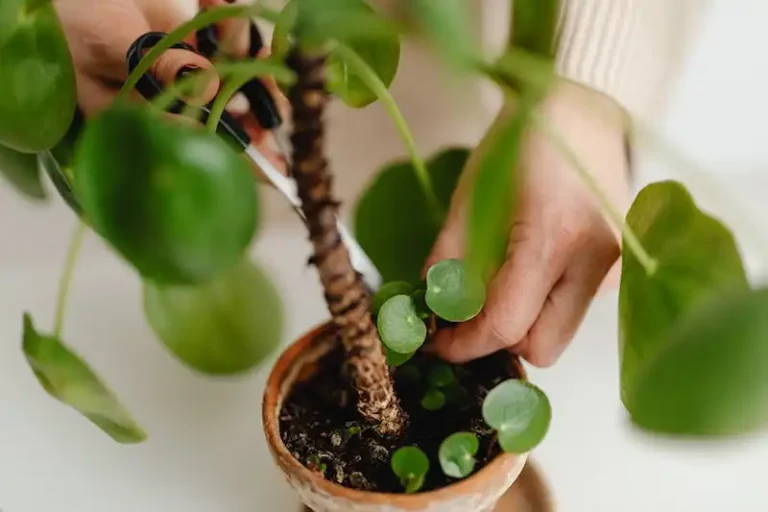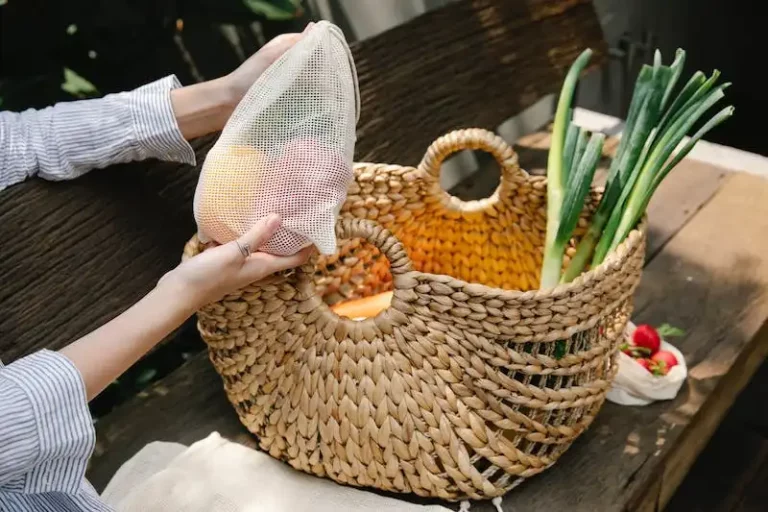The pine cone is actually a seed distributor for many conifer trees, but it is most commonly associated with the pines. These cones are filled with seeds that are dispersed after they ripen. Some cones rely on fire to trigger seed dispersal, while others rely on the wind to carry them away. It’s fascinating how these tiny cones know exactly when and how to release their seeds.
When the cones are mature and ready to be opened, they will hold on to the tree until the conditions are just right. This period can last from a few days to several weeks. For treehuggers, it is a joy to watch the serotinous cones open and release their seeds, as it is a sign of new life and growth for the forest.
For beginners in botany, it might be surprising to learn that pine cones are not actually fruits. The cones are opened sparingly by the trees, and the majority of the seeds remain inside. To help with propagation, pine cone seeds can be collected and planted. But be aware: this is not always a foolproof solution. Many factors, such as the size and condition of the cone, as well as the time of planting, can affect the success of growing seedlings from these seeds.
So, the next time you come across a pine cone, take a moment to appreciate its role in the life of a tree. It is not just a beautiful natural object, but a clever and efficient way for conifer trees to propagate and ensure their species’ survival.
“In the hands of a beginner, a pine cone is a fascinating object of inquiry and study; in the hands of a botanist, it is a solution to many questions in plant propagation.” – 101 Pine Cone Facts
Pine Cone Botany For Beginners
In this beginner’s guide to pine cone botany, we will explore the basics of understanding and working with pine cones. Whether you are interested in trees, how to propagate them, or simply want to learn more about the fascinating world of pine cones, this article is for you.
Pine cones are the seed structures of pine trees. They contain the pine seeds, which can be planted to grow new pine trees. To obtain pine seeds, you will need to harvest pine cones that have ripened and opened. This typically happens after the cones have spent a few years growing on the tree.
Once you have collected the ripe pine cones, you can open them to access the seeds. This can be done by simply breaking the cone apart or by using a special tool designed for this purpose. Inside the cone, you will find the seeds nestled within the woody scales of the cone. It’s important to remember that not all cones contain viable seeds, so you may need to collect a few cones to ensure success.
Now that you have the pine seeds in hand, you need to know how to plant them. Pine trees are conifers, which means they can grow in various environments. However, they often prefer well-drained soil and a sunny location. To plant the seeds, you can simply scatter them on the ground and lightly cover them with a thin layer of soil. Alternatively, you can start the seeds in pots or trays and then transplant the seedlings once they are strong enough.
It’s worth noting that pine cones have a unique mechanism for distributing their seeds. Most pine cones rely on the wind to carry their seeds away from the parent tree. However, some pine cone species, known as serotinous cones, only release their seeds in response to the heat of a fire. This adaptation helps to ensure the survival of the species in fire-prone environments.
In conclusion, pine cone botany is a fascinating subject that can be enjoyed by beginners and experts alike. By understanding how to collect and germinate pine cone seeds, you can unlock the diversity of pine trees and contribute to the beauty of our natural world.
Pine Cones 101
Pine cones 101 is a beginner’s guide to understanding the fascinating world of pine cones. They are not just simple ornaments that you see during the holiday season but have a much deeper significance. This article will provide you with valuable information about pine cones and how they play a crucial role in the life cycle of pine trees.
What Exactly are Pine Cones?
A pine cone is the protective structure that holds the seeds of a pine tree. These cones come in various shapes and sizes, depending on the species of pine tree they belong to. Pine cones are actually a type of fruit, and they are essential for propagating new pine trees.
How do Pine Cones Grow and Mature?
Pine cones begin as small, green structures on the branches of pine trees. As they grow and mature, they start to change color and become hardened. Pine cones need time to ripen and open up, after which they can be harvested to collect the seeds for planting.
Pine cones are filled with seeds, also known as pine nuts, that are a popular snack and cooking ingredient. Many pine nuts are harvested from the cones of pine trees, but there are also some lesser-known species that produce edible seeds.
The Role of Pine Cones in Propagation
Pine cones play a vital role in the propagation of pine trees. When a pine cone matures and opens, it releases the seeds, also known as pine nuts. These seeds can then be collected and planted to grow new pine tree seedlings.
Pine cones have evolved a fascinating mechanism to help with the distribution of their seeds. Some pine cones, known as serotinous cones, require the heat of a fire to open and release their seeds. This helps ensure the survival and spreading of pine tree populations, especially in fire-prone areas.
How to Grow Pine Cones
If you are interested in growing your own pine cones, you can start by collecting mature pine cones from existing trees. Take care to choose healthy and intact cones, as damaged cones may not produce viable seeds.
Once you have collected the pine cones, spread them out on a flat surface and allow them to dry for a few days. After drying, gently shake the cones to release the seeds. You can then plant the seeds in pots or directly in the ground, keeping them watered sparingly until they begin to sprout.
Growing pine cones from seeds may take several weeks or even months, so it requires patience and proper care. However, it can be a rewarding experience to observe the diverse range of pine tree seedlings that will emerge from the seeds.
In conclusion, pine cones are not just beautiful natural ornaments, but they are also an essential part of the life cycle of pine trees. Understanding how pine cones grow, mature, and propagate can help you appreciate the incredible diversity and importance of these natural structures. So the next time you come across a pine cone, take a moment to think about the fascinating process it represents.
Pine Cone Diversity
Pine cones may seem like a tiny and inconspicuous part of a tree, but they play an important role in the diversity and distribution of conifer species.
Pine cones are the woody fruit of conifer trees and they are filled with seeds. The life cycle of a pine cone can be several years long. It begins with a seed germinating and growing into a seedling. It takes weeks or even days for the seed to germinate and begin growing. Once a seedling has started to grow, it will take just a few years for it to become a small tree.
There are many different species of pine cones, each with their own unique characteristics. For example, they can vary in size, shape, and color. Some trees produce cones that are serotinous, meaning they remain closed until they are triggered to open by fire. Others produce cones that open and release their seeds just a few days after they have ripened.
Collecting pine cones can be a fun and educational activity. If you want to propagate pine trees, collecting cones can be a great source of seeds. Simply collect cones that have opened on their own, as these are the ones that are ready to release their seeds. You can then plant the seeds in soil and keep them watered until they germinate. This is a good solution for beginners who want to plant their own pine trees.
| Pine Cone Diversity |
|---|
| There are many different species of pine cones, each with their own unique characteristics. For example, they can vary in size, shape, and color. Some trees produce cones that are serotinous, meaning they remain closed until they are triggered to open by fire. Others produce cones that open and release their seeds just a few days after they have ripened. |
Pine cones are not just a source of seeds, they also hold a special significance in botany and the study of fire. The diversity of pine cones plays a role in how forests grow and evolve over time. For example, a forest dominated by trees that produce serotinous cones is more likely to experience a severe fire. On the other hand, a forest with a mix of trees that produce cones that open and release their seeds shortly after ripening is more likely to have a lower fire frequency and intensity.
In conclusion, pine cones are more than just a woody fruit of a tree. They are a fascinating example of nature’s diversity and a key player in the distribution and propagation of conifer species. Whether you are collecting pine cones for fun or for a purpose, they can teach us a lot about the intricate relationship between plants, fire, and the environment.
Lesser-known Cones
The seeds of conifers grow inside fruits, which are cones. While most people are familiar with pine cones, there are actually many lesser-known cones that hold the trigger for conifer tree growth. These lesser-known cones are smaller than the pine cones, and you can find them scattered on the forest grounds.
How do cones grow?
Conifers are a diverse group of trees, but most of them follow the same process when it comes to cone production. It all begins with tiny seeds that will grow inside the cone. When the cones ripen, they open up and release the seeds. For example, pine cones can take up to 2 years to fully ripen.
Germinating the seeds
After the cones are collected, the seeds can be planted to grow new conifer trees. One common method is to keep the seeds in water for a few days to help with germination. Another solution is to simulate the natural conditions by stratifying the seeds or subjecting them to cold temperatures before planting. Seedlings can also be grown by planting the seeds directly in the ground and letting nature do its work.
By distributing their seeds through wind or water, conifers ensure that their species continue to thrive. Some cones, known as serotinous cones, hold onto their seeds even after the tree has spent after a fire. When the conditions are right, the cones open up and the seeds are released, allowing new growth to occur.



